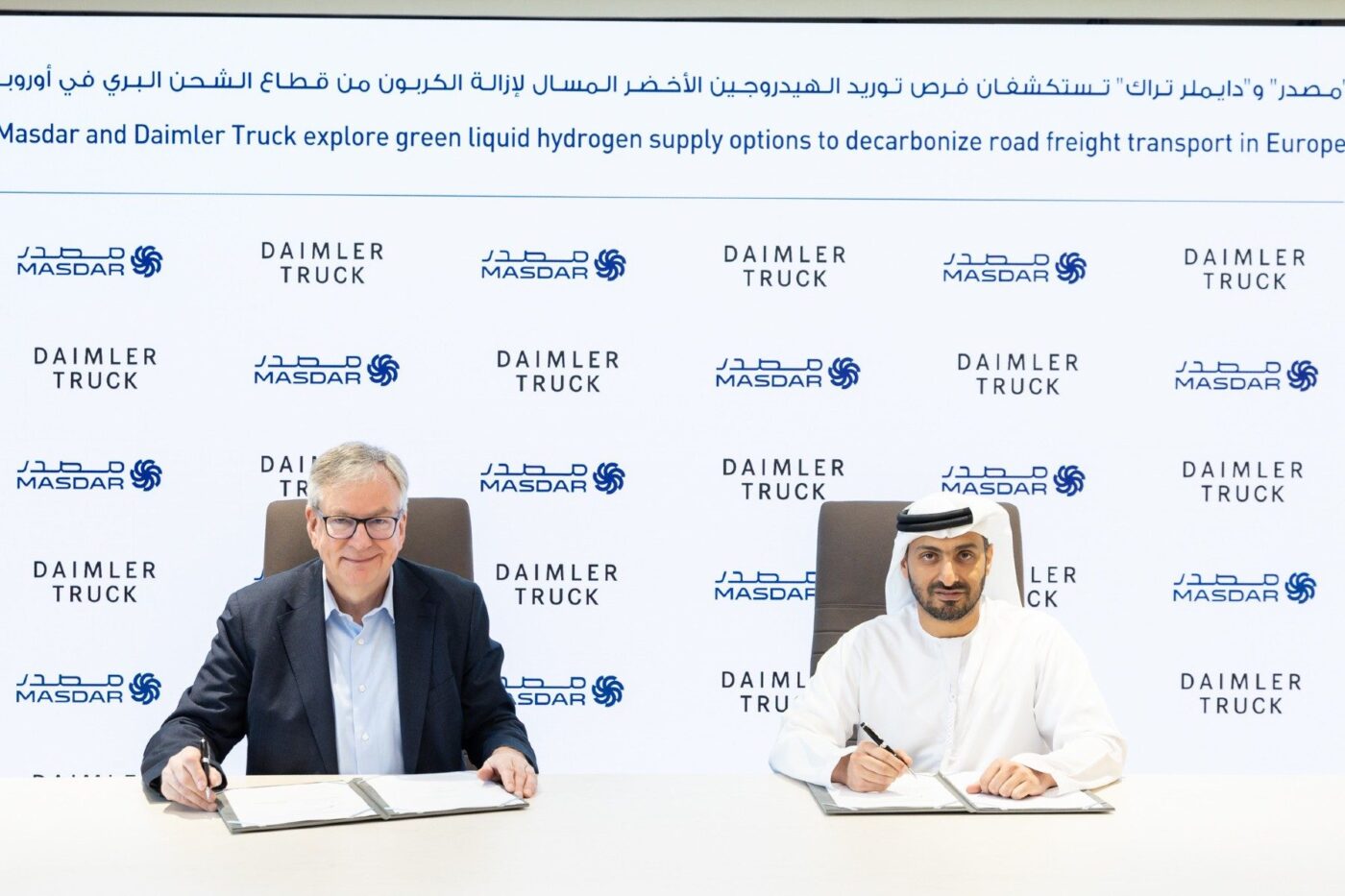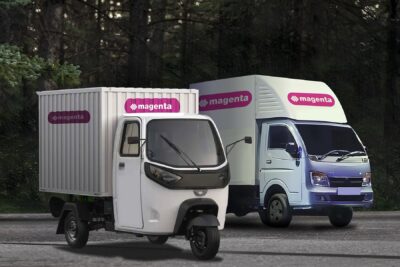Daimler Truck discusses purchase of liquid hydrogen from Abu Dhabi
Daimler Truck and Masdar have set out their joint ambition to explore export opportunities for green liquid hydrogen from Abu Dhabi in a letter of intent. The Stuttgart-based truck manufacturer is known to be pursuing a dual strategy with hydrogen and battery-powered vehicles in its decarbonization plans. The GenH2 Truck – the first H2 truck with a star – is scheduled to go into series production in 2027. Unlike early prototypes, this model will not be powered by gaseous hydrogen but by liquid hydrogen (LH2).
The United Arab Emirates is pursuing the plan to establish itself as a “leading and reliable producer and supplier of low-carbon hydrogen” by 2031, according to an accompanying press release from Daimler Truck Headquarters. Masdar – founded in 2006 – is to play a key role in this. The energy company is said to have already developed projects in more than 40 countries and with a total power generation capacity of more than 20 GW (gigawatts). Masdar aims to reach 100 GW by 2030.
According to Masdar CEO Mohamed Jameel Al Ramahi, his company aims to become one of the leading players in the development of green hydrogen worldwide – “and we believe that the transportation sector is one of the most strategically important markets for green hydrogen”. According to the CEO, the agreement with Daimler Truck has the potential to enable a significant reduction in CO2 emissions in road freight transport in Europe, “and it (…) follows our ‘Smart-Early-Mover’ approach, which aims to carry out projects with strategic partners around the world.”
Martin Daum, Chairman of the Board of Management of Daimler Truck Holding AG, emphasizes that the company wants to play a pioneering role in sustainable transport. “In order to decarbonize commercial vehicles, it is absolutely crucial to make green energy available globally. Our initiative with Masdar is a first step towards enabling the supply of green liquid hydrogen in Europe.”
The Stuttgart-based truck manufacturer is planning to convert its entire range of trucks and buses in its core markets of Europe, the USA and Japan to CO2-neutral drives (in driving mode) by 2039. In addition to the battery-electric drive – as in the eActros series – Daimler Truck is also focusing on hydrogen mobility. For years, the company has been working on a hydrogen truck for long-distance transportation with the GenH2 Truck.
Only recently, after intensive testing on the test track and on public roads, Daimler Truck certified that its GenH2 Truck is “at an advanced stage of development”, meaning that it can be used for the first customer-oriented driver trials. The company describes this step as entry into the next development phase. As mentioned above, the model should be ready for series production in three years’ time.
The fleet will initially comprise five test vehicles, which are expected to be put into service by Amazon, Air Products, Holcim, INEOS and Wiedmann & Winz from mid-2024. “The five articulated trucks will be used in Germany on specific routes and in various long-distance transport applications, for example in the transportation of building materials, sea containers or bottled gases,” a company press release stated last month.
The quintet are already vehicles that use liquid hydrogen as fuel. Earlier prototypes of the model still worked with four pressurized tanks. As Daimler Truck announced, the five vehicles will be refuelled at “designated public liquid hydrogen filling stations in Wörth am Rhein and in the Duisburg area.” The reference is due to the fact that liquid hydrogen filling stations are still virtually non-existent.
The development goal of the production-ready GenH2 Truck is a range of up to 1,000 kilometres and more. This was already announced when the concept vehicle was unveiled in September 2020. The manufacturer demonstrated that this is a realistic goal with its #HydrogenRecordRun in September. As part of this, a GenH2 truck recently drove 1,047 kilometres within Germany on one tank of liquid hydrogen.





0 Comments